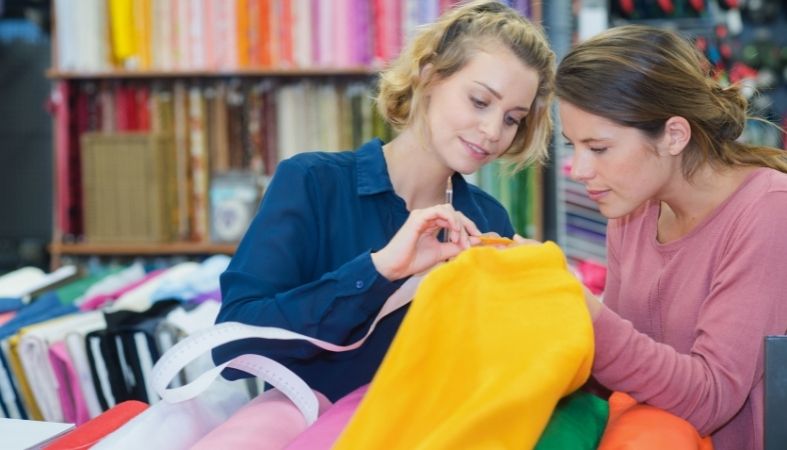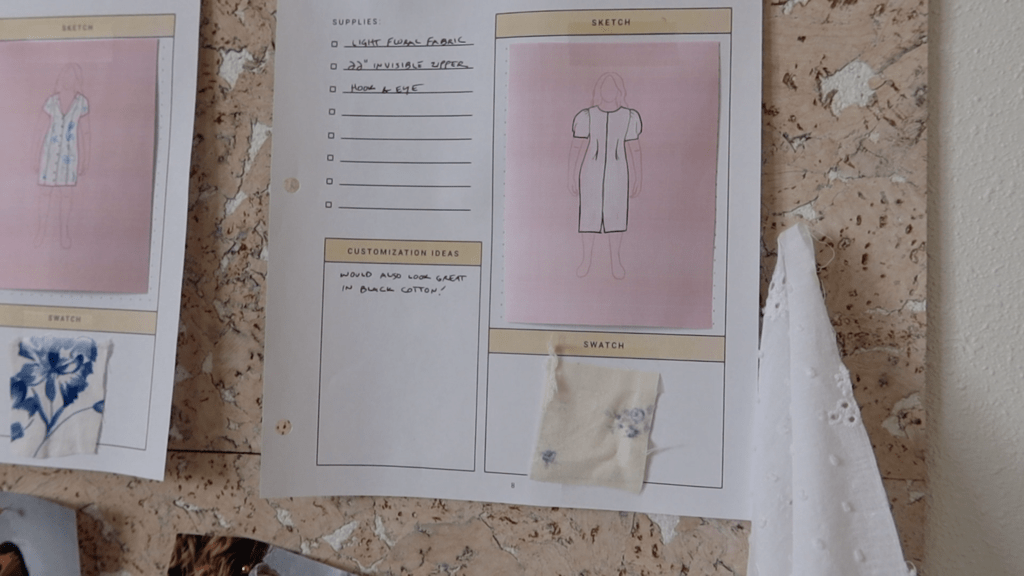Not known Details About All 4 Way Stretch Fabrics
Not known Details About All 4 Way Stretch Fabrics
Blog Article
All 4 Way Stretch Fabrics Fundamentals Explained
Table of ContentsAn Unbiased View of All 4 Way Stretch FabricsNot known Details About All 4 Way Stretch Fabrics Things about All 4 Way Stretch FabricsSome Of All 4 Way Stretch FabricsGetting The All 4 Way Stretch Fabrics To WorkAll 4 Way Stretch Fabrics - The FactsThe Buzz on All 4 Way Stretch Fabrics
As I likewise desire UV security from my garments when I go out, I would certainly select a densely woven cotton fabric. One even more factor to consider when buying the material is the method it will after washing.A safe wager would certainly be to purchase at least 10% extra textile. If you can get preshrunk material, this is the best.

If you are matching the color, like choosing the cellular lining for the primary material or picking textile to include as trim, this is especially essential. The material showrooms will generally have a light well where you can see the fabric in sunlight (or a window with excellent light from outdoors).
How All 4 Way Stretch Fabrics can Save You Time, Stress, and Money.

Many textiles have to do with 44 large. When you go to acquire material, estimate just how much you desire first and afterwards most likely to the shop. Examine out this blog post to recognize the solution to this often heard inquiry "Just how much textile do I require". With a fat quarter, you will get an 18 large by 22 long.
These are available in the shops I constant as cut pieces they are mainly treasured low and several of them, when they are last off the bolt, valued really low. You will need to ask the salesmans for items like that. Some excellent bargains can be had this means. In dressmaking, we buy material by the yard/meter.
All 4 Way Stretch Fabrics - Truths
In a quarter of a backyard, you obtain a 9 by 44 strip of material, which is regarding 22 cm in size. According to the size of materials, they may be called single-width and double-width.
Select textiles that are not as well hard or rigid, or you wouldn't be comfy in them. Linen, Jeans, flannel, For cooler climates, select wool (100% as well as wool blends) woollen tweeds, wool crepe; it primarily depends on what pants you are speaking about Tailored trousers, Unstructured Pant, Combined, Jeans.
Corduroy fits to use textile to select for trousers. All cotton fabrics benefit youngsters. You can select a cotton satin stretch or a cotton twill or cotton satin or lawn. Knit fabrics are additionally fantastic for children you can choose woollen knits. Interlock knits are dressmaking knits that stretch throughout the grain.
8 Simple Techniques For All 4 Way Stretch Fabrics
Cotton grass towel in pretty prints is great. Silk jersey is a wonderful fabric for stitching skirts, as is Ponte Roma knit fabric.
Drapey rayons, soft woollen, lycra blends, and stretch velours are all suitable for stitching skirts. Woollen (Wool crepe has a wonderful drape and gives enough structure for coats; woollen tweeds are terrific as well), Linen & Flannel. Raw silk, satin, taffeta, velvet, Lace, silk chiffon, and Fabric are all excellent for making gowns.
You can get medium-weight materials with some spandex/elastane added for a fitting bodycon-type outfit. For drapey outfits, you can select lightweight fabrics. Jacket has a drapey fit similar to this. Crepe, challis, and charmeuse are all drapey materials suited for this style. Examine out these blog posts: Finest fabric for making informal outfits and tops; Names of various gowns. Rayon, Acetate, and cotton lining materials are widely utilized.
Lightweight cotton material, Cambric, Chintz, Twill, Faille, Seersucker, Poplin, lightweight woven broadcloth, batiste, bed linen, eyelet benefit making tee shirts and blouses. I enjoy chiffon blouses. Silky satin textile benefits making ventilated tops. Look into the blog post on the 7 finest materials for making shirts. Making shawls and scarves require various factors to consider for the fabric check out this article on the materials for making headscarfs When buying patterned textile (many of the patterned material comes with a width of 45 or 54 inches), there will certainly be pattern repeat in these fabrics, and this must be taken into account when reducing material in addition to buying them i.e., if you want to match the patterns at the joints.
See This Report about All 4 Way Stretch Fabrics
This blog post has the names of all the checkered patterns and this, stripe patterns. The motifs will certainly be dispersed in a scheduled style on the fabric. But you may discover often If the print is not placed on the material appropriately, it can not be matched or lined up when built without distorting the textile and the hang of the garment.


You can discover more about grain and grainline of fabric right here. The material weight depends on many factors like the weave, fiber type, and so on and is generally signified by GSM. GSM can differ from 60 -700; 700 being the GSM of really top notch woolen textile. A denim material has a GSM of 400, relying on the weave.
One point you have to keep in mind is that higher textile weight does not represent greater material quality. It simply is a sign of the viability of the material for a specific task. You can pass by high textile weight textile denim for a light-weight floating stole. Understanding the textile weight works when contrasting the very same sort of textiles, yet also this will depend upon its application.
In a nutshell, the most essential criteria to look for in the textile you get are as adheres to (https://pagespeed.web.dev/analysis/https-www-4waystretchfab-com/cqaef5p87h?form_factor=mobile). The number of threads per inch of textile (yarns-per-inch).
All 4 Way Stretch Fabrics - An Overview
This is very crucial in any kind of textile. In high-grade fabric, this equilibrium (either in right here numbers or in dimension) will certainly constantly be preserved. Procedures made use of on material to improve appearance and efficiency. The fibers that are woven to make the textile will either be as a solitary strand or will certainly be created by combining 2 threads (turned).
A two-ply yarn is remarkable to a single-ply thread.
If you are obtaining prepared to start a new embroidery task, picking a textile will certainly be the most crucial step once you decide what you intend to make. After you've mosted likely to all the problem and cost of getting the sewing device you love, a pattern you enjoy, and a textile you like, you want the ended up item to be a success, right? One means to achieve that is to start by making sure your fabric is absolutely right for the project.
The 3-Minute Rule for All 4 Way Stretch Fabrics
As an example, if you're making a patchwork, you'll immediately want to utilize quilter's weight cotton for ideal outcomes. Yet what happens if you wish to make a product of apparel? Just how do you recognize which fabric will provide you the very best outcome? Selecting a material just because you like the print or layout on it isn't necessarily the very best method.
In order to avoid doing an entire task for basically absolutely nothing, we have actually put together some ideas to help you make a decision which material is ideal for your job. Let's say you already have a project in mind; how do you find the ideal textile for it?
Assume of the attributes you desire the ended up product to have. If apparel, will it be fitted or loose? Dressy or daily? For warm weather condition or cold? Do you desire a solid shade or a print? If you are making a non-wearable product such as a pillow cover or potholder, make use of a tough fabric such as canvas.
There is so much information available about textiles, their qualities, and their uses, it could get to be overwhelming! So do not attempt to take it in all at the same time; just begin with the task handy. Learn all you can concerning the textile you utilize for this job.
Report this page